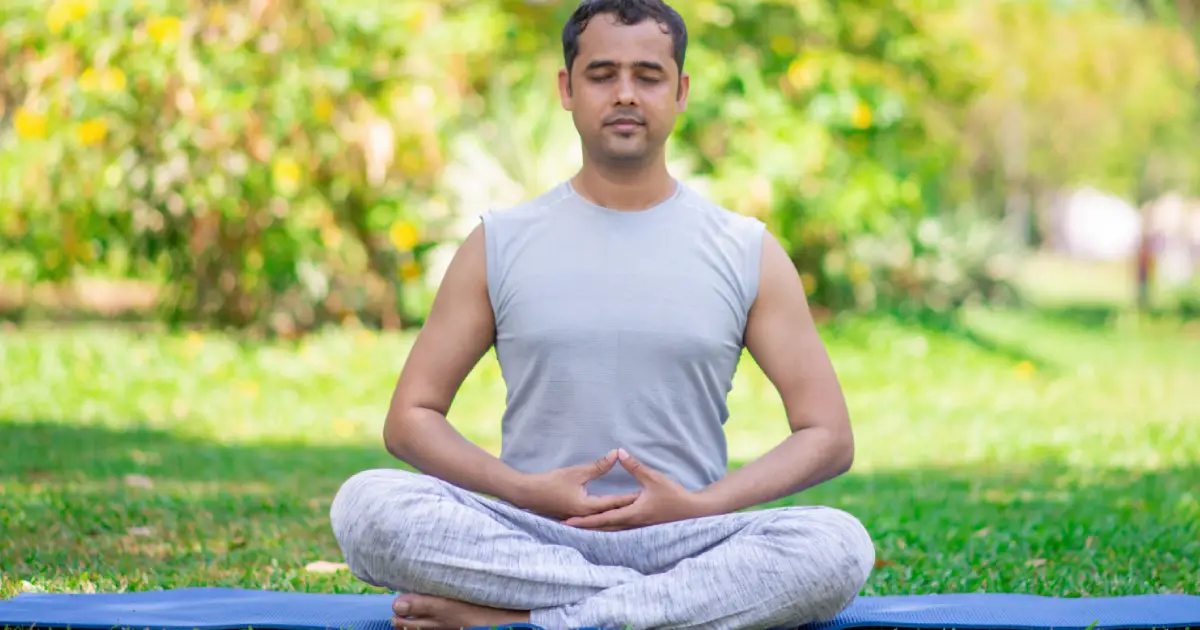
Get A Free Quote


In the yoga world, breathing is considered an art form, a symphony of conscious inhalation and exhalation called Pranayama. It is not merely an involuntary act. Pranayama, the Sanskrit word for "life force control," is a series of breathing techniques designed to assist us in gaining control over the prana, or life force, that flows through our bodies.
Kapalbhati is a breathing technique that will put you on cloud nine. The purification and rejuvenating effects of Kapalbhati are the highest of all the Pranayama techniques. Its name, which combines the Sanskrit words "kapal" (forehead) and "bhati" (to shine), describes its ability to enliven the body and illuminate the mind.
The vigorous breathing technique known as "Kapalbhati," or "Skull Shining Breath," entails quick, forceful exhalations followed by passive inhalations. The body produces heat as a result of this rhythmic, bellows-like action, which stimulates the internal organs and aids in detoxification.
The many advantages of Kapalbhati are what makes it significant. It is an effective detoxification technique that stimulates the respiratory system, removes congestion, and flushes out toxins. It also develops mental clarity, increases energy, and improves cognitive function.
Kapalbhati breathing technique is unique among yoga breathing techniques because it emphasizes forceful exhalations. In contrast to other forms of Pranayama, which emphasize slow, deep breathing, Kapalbhati emphasizes quick, rapid exhalations that create a bellows-like effect that stimulates the internal organs and aids in detoxification.
Vatakrama Kapalbhati is the most common type of Kapalbhati. It entails sitting with the spine straight and in a comfortable position. Put your hands on your belly and close your eyes. Take a slow, deep breath through your nose. Next, firmly exhale through your nose while tightening your abdominal muscles. Continue this pattern for 10-15 rounds.
In order to perform Vyutkrama Kapalbhati, one must first inhale water through the nose and then forcefully exhale it through the mouth. It is said that this method works especially well for sinusitis and congestion clearing.
In Sheetkrama Kapalbhati, the technique is similar to Vatakrama Kapalbhati except that water is inhaled through the mouth and then forcefully exhaled through the nose. The lungs and respiratory system are said to be strengthened especially well by this practice.
Beginners should begin with three to five-minute sessions, and with consistent practice, they can work their way up to ten to fifteen minutes. Depending on tolerance and goals, one can practice kapalbhati daily or multiple times a week.
It is possible to incorporate kapalbhati into a regular yoga practice with success. It is frequently performed as a prelude to other asanas and pranayama exercises. Kapalbhati can also be used as a standalone practice for immediate stress relief or digestive stimulation.
Steer clear of overdoing it, especially in the beginning when practicing. Pay attention to your body and take pauses when necessary.
When performing Kapalbhati, always breathe through your nose. Mouth breathing may cause discomfort and dryness.
Refrain from doing Kapalbhati right after eating. Give your digestion at least an hour to settle.
Before performing Kapalbhati, seek medical advice from a professional if you have any underlying medical conditions, such as high blood pressure or heart disease.
Humming and exhaling, combine Bhramari Pranayama with Kapalbhati. This produces a calming vibration that enhances mental clarity and induces even deeper relaxation. You can read more about Bhramari Pranayama here.
Continue taking passive breaths while gradually lengthening your exhalations. This intensifies the exercise and amplifies its purifying benefits.
During Kapalbhati, include visualization techniques. Envision the removal of toxins from the body during exhalation and the entry of pure energy during inhalation.
More advanced forms of Kapalbhati, like Bhastrika Pranayama (Fiery Breath) and Surya Bheda Pranayama (Sun Breath), are available for practitioners with experience. These variations call for more practice and involve a quicker breath cycle.
The ancient yogic breathing method known as Kapalbhati Pranayama provides a profound route to both physical and mental well-being. Kapalbhati Pranayama has great potential for anyone looking to improve digestion, reduce stress, or go on a more in-depth self-discovery journey. Accept this life-changing exercise and experience its profound effects on your general health. Begin your journey towards Kapalbhati today and discover the rejuvenating power of this age-old yoga technique.

Posted: 10 December, 2023
Renowned for his expertise in yoga and its philosophy, Sajan Negi brings over 15 years of experience in guiding individuals on their transformative journey towards holistic well-being. With a Master’s degree in Yoga and a life dedicated to personal growth, Sajan Negi combines ancient wisdom with modern insights to inspire physical strength, mental clarity, and spiritual peace in his students.